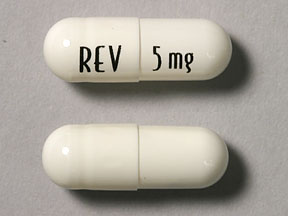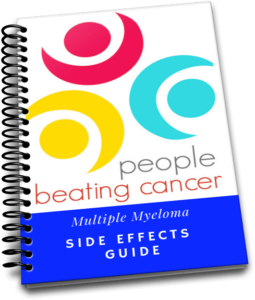
Recently Diagnosed or Relapsed? Stop Looking For a Miracle Cure, and Use Evidence-Based Therapies To Enhance Your Treatment and Prolong Your Remission
Multiple Myeloma an incurable disease, but I have spent the last 25 years in remission using a blend of conventional oncology and evidence-based nutrition, supplementation, and lifestyle therapies from peer-reviewed studies that your oncologist probably hasn't told you about.
Click the orange button to the right to learn more about what you can start doing today.
- You are here:
- Home »
- Blog »
- Multiple Myeloma »
- Continuous Maintenance Therapy – Myeloma
Continuous Maintenance Therapy – Myeloma

“The evolving paradigm of continuous therapy and maintenance treatment approaches in multiple myeloma (MM) offers prolonged disease control and improved outcomes compared to traditional fixed-duration approaches…”
The practice of continuous or maintenance therapy has become a piece of the standard-of-care therapy plan for newly diagnosed multiple myeloma patients. The idea is that therapy beyond the initial treatment for the patient (whether induction, ASCT, etc.) will increase progression-free survival (PFS) and hopefully even overall survival (OS).
Continuous therapy commonly refers to administering a doublet or triplet regimen until disease progression, whereas maintenance approaches typically involve single-agent or doublet treatment following more intensive prior therapy with autologous stem cell transplant (ASCT) or doublet, triplet, or even quadruplet induction therapy.
What does the research show?
Some studies have shown both an improvement in the length of your first remission from maintenance therapy, some have not. Some have shown an improvement in length of life, some studieshave not.
All studies have shown an increase in short, long-term and late stage side effects from myelosuppression to fatigue to an increase in secondary cancers.
In my experience, myeloma patients follow the recommendation of their oncologists to undergo either continuous or low-dose maintenance therapy until they, the patient, asks (begs) for some sort of change to the therapy plan.
In other words, myeloma patients try to follow the recommendations of their oncs. but often succumb to toxicity. Unfortunately, conventional oncology is not educated about the ability of non-toxic therapies to reduce the risks of toxicity.
Some nutrition, supplementation and lifestyle therapies have been shown to both increase efficacy of chemo regimens while reducing toxicity.
Are you considering maintenance or continues therapy? You are facing many, many issues. I have been studying and writing about myeloma for years. I try to take on some of the thorniest issues below.
- Maintenance Therapy – Myeloma
- Myeloma – Low-dose Maintenance Therapy
- Myeloma, Low-dose Maintenance Chemotherapy vs. Evidence-based Non-toxic Therapies
- Myeloma in Complete Remission – Maintenance Chemo?
- Low-dose Maintenance Post Autologous Stem Cell Transplantation – Pros/Cons
- Multiple Myeloma Maintenance – Revlimid Skin Patch
- Revlimid – Beyond Myeloma Maintenance
The most interesting statistic in the research below is that American myeloma patients overwhelmingly undergo maintenance therapy (81% of ASCT patients, 61$ of non ASCT patients) while Europeans do not (12% of all MM patient).
Why do you think Europeans don’t what to undergo low-dose maintenance?
- To learn more about your myeloma prognosis click now
- To Go To Multiple Myeloma Explained- click now
- To learn more about LDRM- click now
Scroll down the page, post a question or comment and I will reply to you ASAP.
Thanks,
David Emerson
- MM Survivor
- MM Cancer Coach
- Director PeopleBeatingCancer
Developments in continuous therapy and maintenance treatment approaches for patients with newly diagnosed multiple myeloma
“The evolving paradigm of continuous therapy and maintenance treatment approaches in multiple myeloma (MM) offers prolonged disease control and improved outcomes compared to traditional fixed-duration approaches…
“Continuous therapy” commonly refers to administering a doublet or triplet regimen until disease progression, whereas maintenance approaches typically involve single-agent or doublet treatment following more intensive prior therapy with autologous stem cell transplant (ASCT) or doublet, triplet, or even quadruplet induction therapy. However, the requirements for agents and regimens within these contexts are similar: treatments must be tolerable for a prolonged period of time, should not be associated with cumulative or chronic toxicity, should not adversely affect patients’ quality of life, should ideally be convenient with a minimal treatment burden for patients, and should not impact the feasibility or efficacy of subsequent treatment at relapse…
Here we review the latest results with long-term therapy approaches in three different settings in NDMM:
- maintenance treatment post ASCT;
- continuous frontline therapy in nontransplant patients;
- maintenance treatment post-frontline therapy in the nontransplant setting.
Maintenance was used in 81% of autologous stem cell transplant (ASCT) patients and 68% of nontransplant patients in 2017 US physician-reported data11. However, retrospective data on real-world practice patterns in Europe indicated only 12% of patients received maintenance as part of frontline treatment (acknowledging that this 2016 publication preceded the 2017 approval of lenalidomide in this setting)12…
Conclusions
The paradigm of long-term treatment is becoming increasingly well-established in different treatment settings in NDMM, with data reported on multiple agents and regimens in each setting clearly demonstrating the value of prolonged treatment duration on PFS and, in some cases (primarily lenalidomide as post-ASCT maintenance), OS…
In order to optimize individual patient outcomes, it will be important to elucidate which continuous therapy and maintenance treatment approaches are most appropriate for which patient subgroups, taking into account not only clinical efficacy and safety but also tolerability, QoL, and patients’ perspectives regarding the feasibility, convenience, and burden of long-term treatment.
For example, some patients may prefer to maximize QoL and enjoy a treatment-free interval rather than have a PFS benefit with no QoL improvement with long-term therapy…
Various other clinically important questions remain to be answered regarding continuous therapy and maintenance, such as optimal treatment duration,
- dosing schedule,
- the potential role of MRD evaluation in guiding decisions regarding continuation of treatment (and potentially as a regulatory endpoint),
- and how best to tailor treatment duration and intensity in the context of patient age and fitness,
- in order to provide optimal outcomes…”


